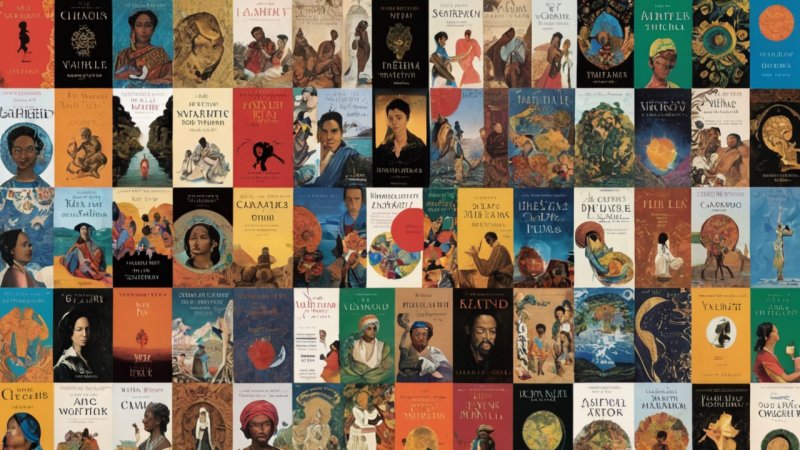Translation serves as a vital bridge that connects diverse cultures and allows for the dissemination of literature across linguistic boundaries. The impact of translation on global fiction is profound, as it not only enables access to a wider audience but also influences the way stories are told and understood. Through the lens of translation, we can explore how narratives transform, how cultural nuances are preserved or altered, and how the act of translating shapes the global literary landscape.
Understanding Translation in Literature
Translation is often viewed merely as a linguistic exercise, but it is much more than that. It involves a careful negotiation between source and target languages, where the translator must convey not just words, but the essence of the original text. Literary translation is particularly complex, as it requires the translator to capture the author’s voice, style, and the cultural context embedded in the narrative.
The Role of the Translator
Translators are akin to literary artists themselves. They must possess a deep understanding of both the source and target cultures, as well as an appreciation for the subtleties of language. The choices they make can significantly affect the reader's experience. For instance, a single word can carry different connotations in different cultures, and a translator must decide which meaning to emphasize. This process can lead to various interpretations of a text, depending on the translator's decisions.
Challenges in Literary Translation
Literary translation is fraught with challenges. One of the primary difficulties is maintaining the original text's tone and style while making it resonate with a different audience. Additionally, idiomatic expressions, cultural references, and humor often do not translate well. Translators must find creative solutions to these issues, sometimes resorting to footnotes or cultural adaptations to preserve the original's intent.
The Globalization of Fiction
With the rise of globalization, literature is more accessible than ever. Books from various cultures can be found on shelves worldwide, thanks to translations. This availability has enriched the global literary landscape, allowing readers to experience stories from different perspectives and backgrounds.
The Rise of Translated Works
In recent years, there has been a noticeable increase in the number of translated works being published, particularly in English-speaking countries. This trend is partly due to the growing interest in diverse narratives and the recognition that literature is a powerful tool for fostering empathy and understanding. Many publishers now actively seek out international authors, resulting in a broader spectrum of voices being heard.
Impact on Literary Trends
The translation of literature has also influenced literary trends. For example, the popularity of magical realism in Latin American fiction has inspired writers worldwide to explore similar themes of fantasy intertwined with reality. Furthermore, the translation of works from non-Western authors has encouraged a more inclusive definition of what constitutes 'literature,' challenging the traditionally Eurocentric canon.
Case Studies of Influential Translations
Several notable translations have had a significant impact on the global literary scene. One such example is Gregory Rabassa's translation of Gabriel García Márquez's One Hundred Years of Solitude. Rabassa's work not only introduced English-speaking audiences to the world of Latin American literature but also showcased the beauty of Márquez's prose in a new language. This translation played a crucial role in the rise of magical realism and significantly influenced contemporary fiction.
The Effect of Translation on Cultural Perception
Translations can shape how cultures are perceived abroad. For instance, the translation of Murakami Haruki's novels has led to a fascination with Japanese culture among Western readers. However, this can be a double-edged sword; translations can also perpetuate stereotypes or simplify complex cultural narratives. Therefore, the responsibility lies with translators to ensure that they present a nuanced view of the culture they are representing.
Translation as a Collaborative Process
Translation is often a collaborative endeavor. Translators may work closely with authors, publishers, and editors to create a version of the text that resonates with the target audience. This collaboration can lead to exciting reinterpretations of the original work, as different perspectives influence the translation process.
Translators and Authors: A Symbiotic Relationship
The relationship between translators and authors is essential for the integrity of a translated work. Authors may provide insights into their intentions, while translators can offer suggestions based on their understanding of the target audience. This dialogue can enhance the final product and ensure that the essence of the original work is preserved.
Future of Literary Translation
As the world becomes increasingly interconnected, the future of literary translation looks bright. Advances in technology, such as machine translation and AI tools, are transforming the landscape of translation. While these tools can assist translators, the human element remains irreplaceable, particularly in literary translation. The emotional depth and cultural understanding required to translate literature effectively cannot be replicated by machines.
Encouraging Diverse Voices
Future literary translations must continue to prioritize diverse voices and narratives. As readers become more aware of the importance of representation in literature, the demand for translations of works from underrepresented cultures will likely grow. This shift can lead to a richer, more inclusive literary landscape that reflects the complexity of human experiences worldwide.
Conclusion
Translation plays a crucial role in the dissemination and evolution of global fiction. It not only facilitates access to literature from around the world but also shapes how stories are told and perceived. As we continue to embrace the diversity of voices in literature, it is essential to recognize the significance of translation in fostering understanding and appreciation for cultures beyond our own. By valuing the art of translation, we ensure that the world of literature remains vibrant and interconnected.






